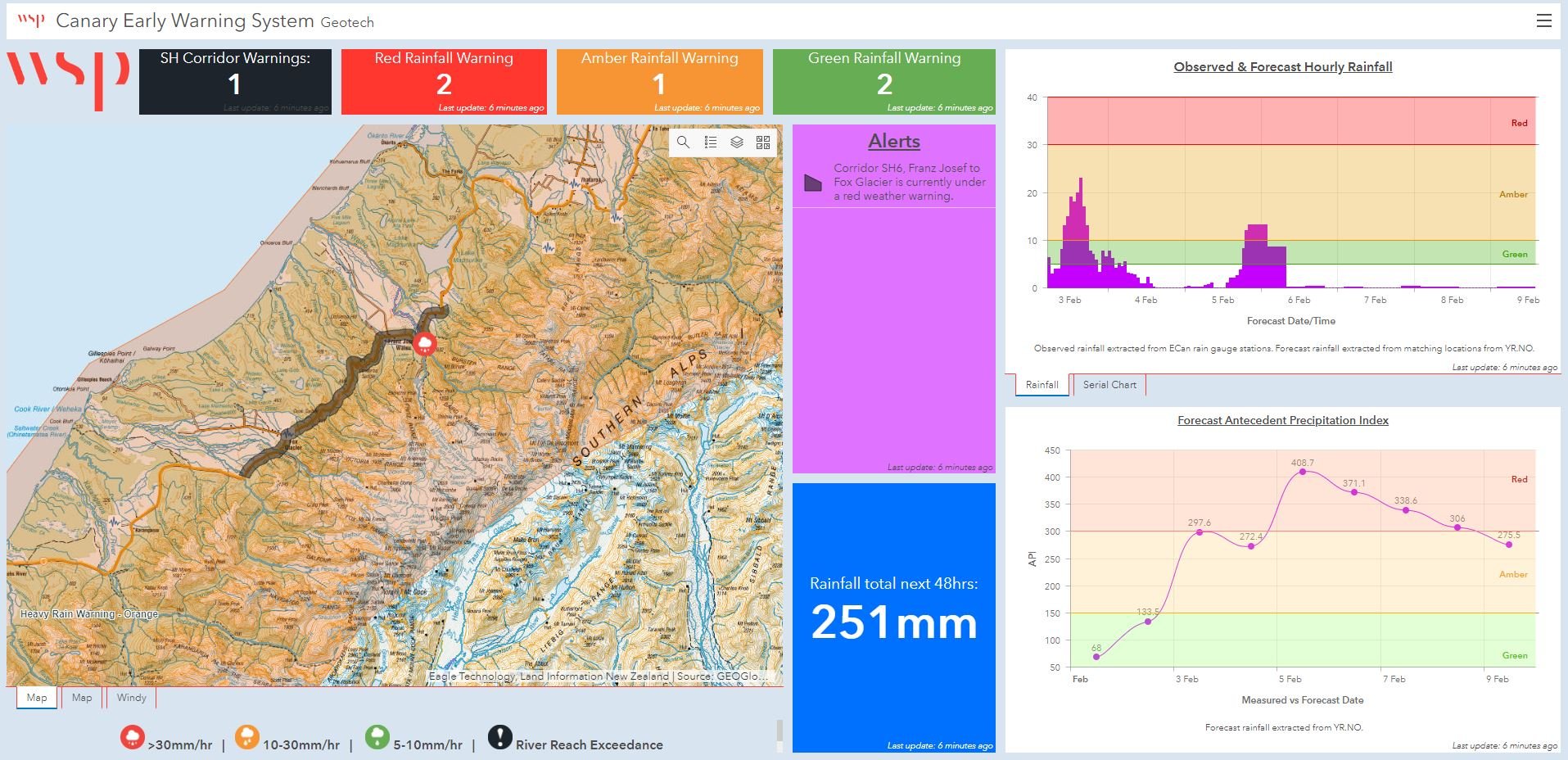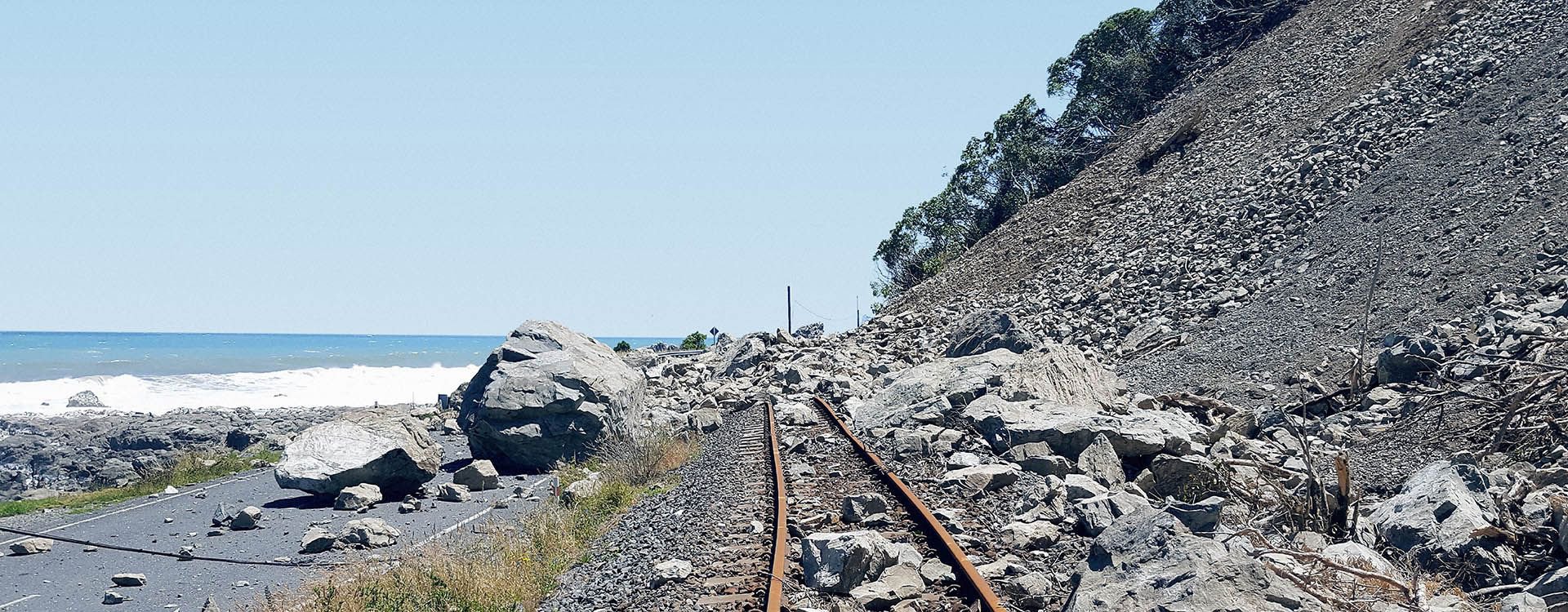

Why is the system called Canary?
Dating back to 1911, miners would take canaries underground to give them early warning of rising carbon monoxide levels and other dangerous gases. The little yellow birds were an early version of what’s known as a Trigger Action Response Plan or TARP. WSP’s Canary risk management system uses automated TARPs to let asset owners know about what actions they should take to better prepare for risk – hence the name Canary.
Is Canary a tool or a service?
Canary is both a tool and a service.
The service is offered as a risk management framework and system that lets asset managers and owners make complex decisions quickly, confidently and informatively - before, during, and after natural hazard events.
Tools used as part of the Canary service include advanced software, technology, sensors, and instrumentation that asset owners can use to better manage risk across their asset portfolio.
Why Canary and the use of TARPS?
The use of TARPs is an excellent strategy for mitigating the growing risk to assets of natural hazard events. Asset owners often have limited access to decision-making guidance before, during and after events which present significant risk to their assets and networks. Asset owners also have an obligation to manage risk under the Health and Safety at Work Act. That’s where Canary can help.
Renewing existing assets with more resilient assets can be prohibitively expensive, leaving a funding gap that often makes it impossible to eliminate the hazard. As a result, engineering controls, such as TARPs, are frequently used as a more cost-effective, temporary alternative.
Canary can integrate with various sources of information through Application Programming Interfaces (APIs). Data can be displayed in a centralized dashboard. Canary can also incorporate additional Geographic Information System (GIS) layers and spatial data, if needed.
The Canary dashboard is based on ArcGIS, which is commonly used in the industry. In this way, licensing is usually not a problem. Additionally, Canary can retrieve real-time asset information from existing asset management tools and systems that are API-enabled - providing a comprehensive view of the asset's status.
What assets can benefit from Canary?
Canary benefits any type of asset that, if it fails or experiences interruptions, would cause significant problems for the asset owner or users.
Assets such as bridges and roads that can be monitored by remote monitoring equipment are especially well-suited for Canary. Weather and flow gauges, for example, can be used to gain insights into the performance of transport assets that sit in the cross hairs of extreme natural hazard events.
With the advance of technology, remote sites can now be monitored using radio or satellite-based technology - providing asset performance and predictions in almost any location.
What is the pricing model for Canary?
Because each situation will take a different approach and level of analysis, cost differs based on the specific needs of the client and asset.
However, the Canary service typically includes a blend of fixed fees, monthly subscription costs, and time-based rates - contingent on the nature of the services required.
What are the alternatives to Canary?
There’s currently no system on the market which gives asset owners deep insight into the likely future condition of their assets or networks as a result of natural hazard events such as flooding, landslips, and earthquakes.
Contact us now to find out how Canary brings together the latest in infrastructure asset management knowledge with cutting edge technology to provide asset owners with useful, actionable, decision-making insights.
Services


